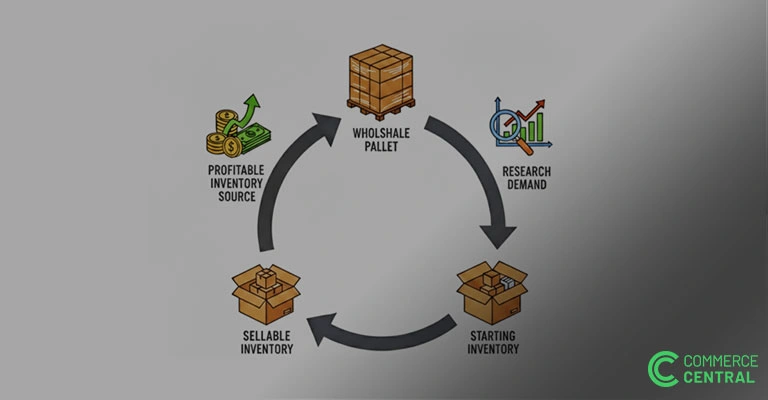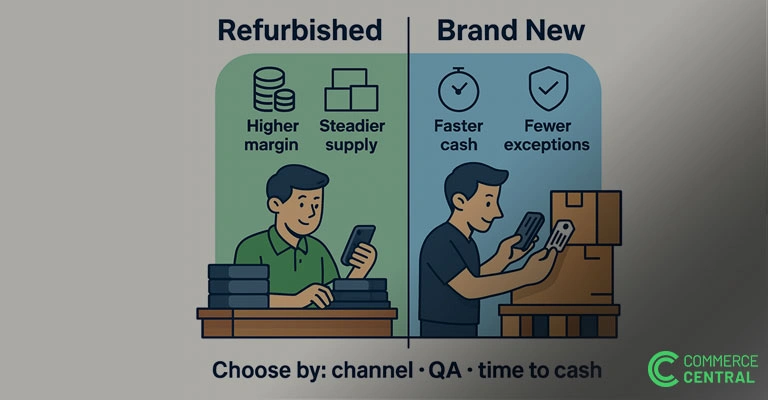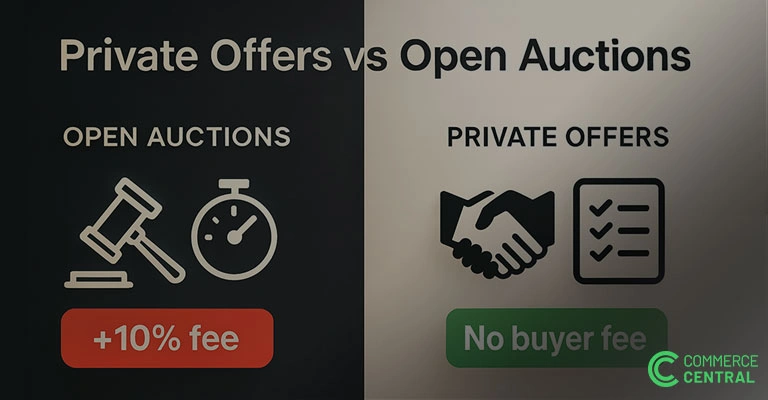
Wholesale Pallets for Sale: A Playbook for New Resellers
Find out how to source products smartly! Our wholesale pallets for sale guide helps new resellers buy confidently and start their eCommerce journey right.

Home goods are one of the most popular and risky categories in closeout sales. For resellers, discount store owners, and flea market vendors, these items can move fast: everyone needs cookware, towels, lamps, and storage bins. But they’re also bulky, sometimes fragile, and often show up with missing parts or scratches.
If you’ve ever ordered a pallet and found chipped dishes, dented air fryers, or a bunch of items that don’t sell, you know the pain.
This guide helps you avoid those traps. You’ll learn how to judge a good home goods deal, what sells fast, and how to protect your profit.
Home goods show up in closeout sales for several reasons:
When Sears in Canada shut down, shoppers hoped for deep discounts. But big-ticket items like furniture and appliances started at just 10% off. Only in the final days did prices drop 50%–90%. One experienced reseller said the best deals came in the last 48 hours, but you needed a truck ready to load fast.
This is common: home goods closeouts often begin with small discounts and get steeper over time. But by then, the best stuff might be gone.
Home goods might look clean in a photo, but what matters is their condition, completeness, and cost to move the item. Here’s what experienced buyers check:
Home goods can be bulky or heavy. A closeout deal on 100 desk lamps or 20 microwave ovens might sound great but where will you store them? And can you afford to ship them?
If you’re selling online, it’s often smarter to stick with smaller items: bedding, curtain sets, cutting boards, or kitchen gadgets. They’re easier and cheaper to mail.
If you run a discount or bin store, larger items work well. You can sell them locally without shipping and buyers get to inspect before buying.
Always factor in freight. The cost to get a pallet to your location, and then to your customer, can make or break a deal.
Some home goods like shelving units or kitchen appliances need all their parts. A blender with no blade or a shelf with missing screws is just scrap.
If you’re shopping in person, open the box. Check that the pieces, cords, and manuals are inside. If you’re buying online, ask for a manifest that notes if anything is “incomplete” or “open box.”
At closeout sales, most items are final sale. There are no refunds. One missing part can turn profit into loss.
Display items or shelf pulls often have wear. That fancy toaster may have been on a store shelf for months. It might have scratches, tape residue, or a bent corner. It might work fine, but customers will expect a discount.
You can resell these but you just need to price them right and be honest about the condition.
Also be careful with fragile items. Dishes, glassware, and decor may break in transit. Even with good packing, some damage is normal in big mixed loads. Smart buyers plan for a small percent of loss when buying pallets of home goods.
Closeouts often include out-of-season goods like Christmas lights in January or summer patio chairs in October. These can be great buys if you’re willing to wait.
But you’ll need storage space. You’ll also need to plan cash flow. You don’t want to be stuck holding slow-moving items for six months with no sales.
One reseller bought winter bedding at a steep discount in April. By November, they sold out — at triple the price. But only because they had the space to store it and the patience to wait.
The best home goods are simple and useful. Cookware. Towels. Plastic bins. Coffee makers. These are things people use every day. Name-brand versions sell even faster.
What doesn’t sell? Odd colors. Overly niche appliances. Off-brand items with missing instructions. Or anything that looks used, even if it technically isn’t.
One buyer ended up with a pallet of off-brand food processors. They worked fine, but the boxes were beat up and the manual was missing. After three months, half were still sitting.
Compare that to another load: neutral-tone comforters in factory plastic. They sold out in one weekend, just from a bin store display.
If you’re buying truckloads for a discount store, home goods can be your bread and butter. But volume adds complexity.
Try building a relationship with a nearby wholesaler or liquidation source. For example, one store owner in Ohio built a connection with a regional vendor who got surplus loads from Target. Now they get first dibs on new truckloads and save thousands in shipping by picking up nearby.
Also, don’t wait for someone else to sort your load. Mix your pallets wisely, rotate bins with fresh stock, and watch what your customers grab first.
Home goods often say “final sale.” That means no returns. So double-check everything, especially if it plugs in.
At a warehouse sale, ask if you can test that air fryer or vacuum. If not, inspect it closely. Look for dents, missing cords, or damaged packaging.
The best buyers don’t rush. They look, listen, and walk away when something feels off.
At Commerce Central, we help trusted buyers like you find sealed, retail-ready home goods from verified sellers, with no guesswork.
You’ll get full manifests, visible condition notes, and freight estimates before you buy. You stay in control. We stay in the background.

Find out how to source products smartly! Our wholesale pallets for sale guide helps new resellers buy confidently and start their eCommerce journey right.

Refurbished vs. brand-new electronics: Discover the smart buyer’s framework for B2B resale, balancing margin, speed, and inventory flexibility

Offers or open auctions - which delivers better results? Explore how invite-only bidding can outperform public auctions in achieving better deals and faster sales
Join the only private surplus distribution platform built for trusted Buyers and Sellers.